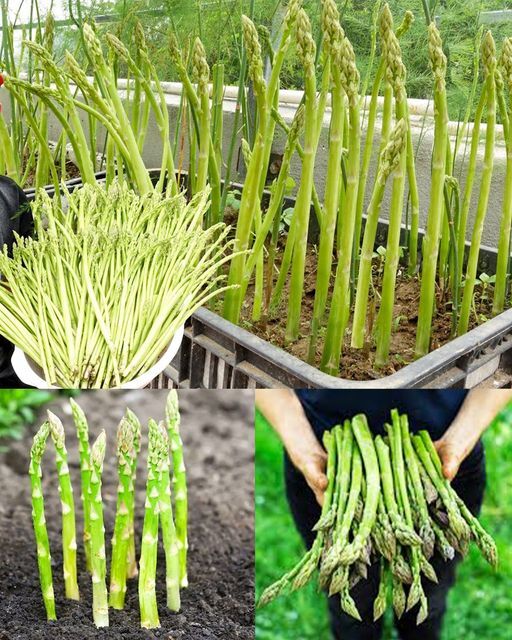Grow Asparagus In Containers: How To Enjoy This Perennial Vegetable Year-Round🌱
Do you dream of growing fresh, crisp asparagus but think it’s impossible due to your limited gardening space? Think again! Asparagus, that delightful springtime vegetable, can thrive in containers. It is a resilient and perennial crop that adds a delightful touch to both elegant kitchen gardens and permaculture food forests. Once the plants have firmly taken root, gardeners can enjoy an annual yield of tender asparagus shoots.
Now, we will walk you through how to grow asparagus in containers, and you will wonder why you didn’t start planting it sooner.
1. Choose The Right Asparagus Varieties
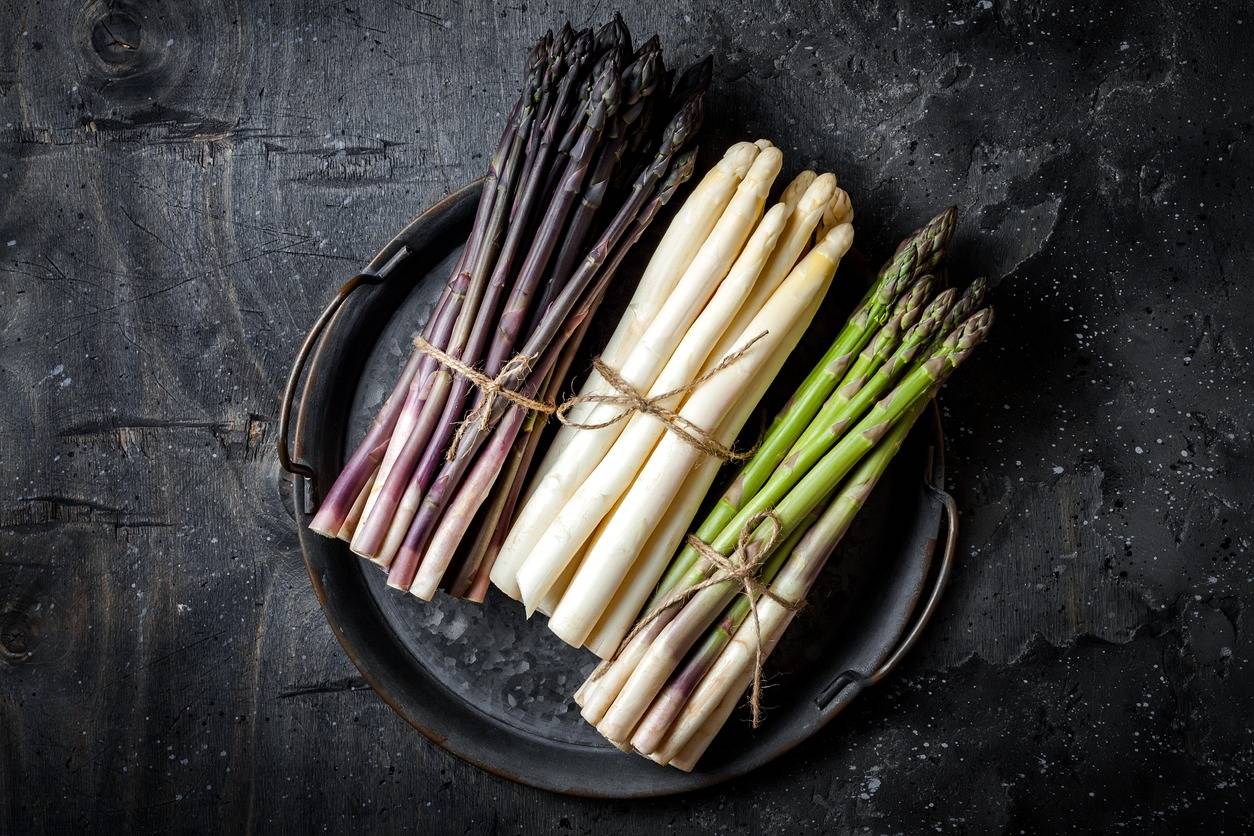
The journey to container-grown asparagus begins with selecting the right varieties. Two popular choices for container gardening are “Mary Washington” and “UC-157.” These varieties are well-suited for confined spaces because they produce compact, manageable ferns and an abundance of delicious, tender spears. When choosing your asparagus crowns, ensure they’re healthy and disease-free, as this will give your container garden a strong start.
2. Selecting The Perfect Container
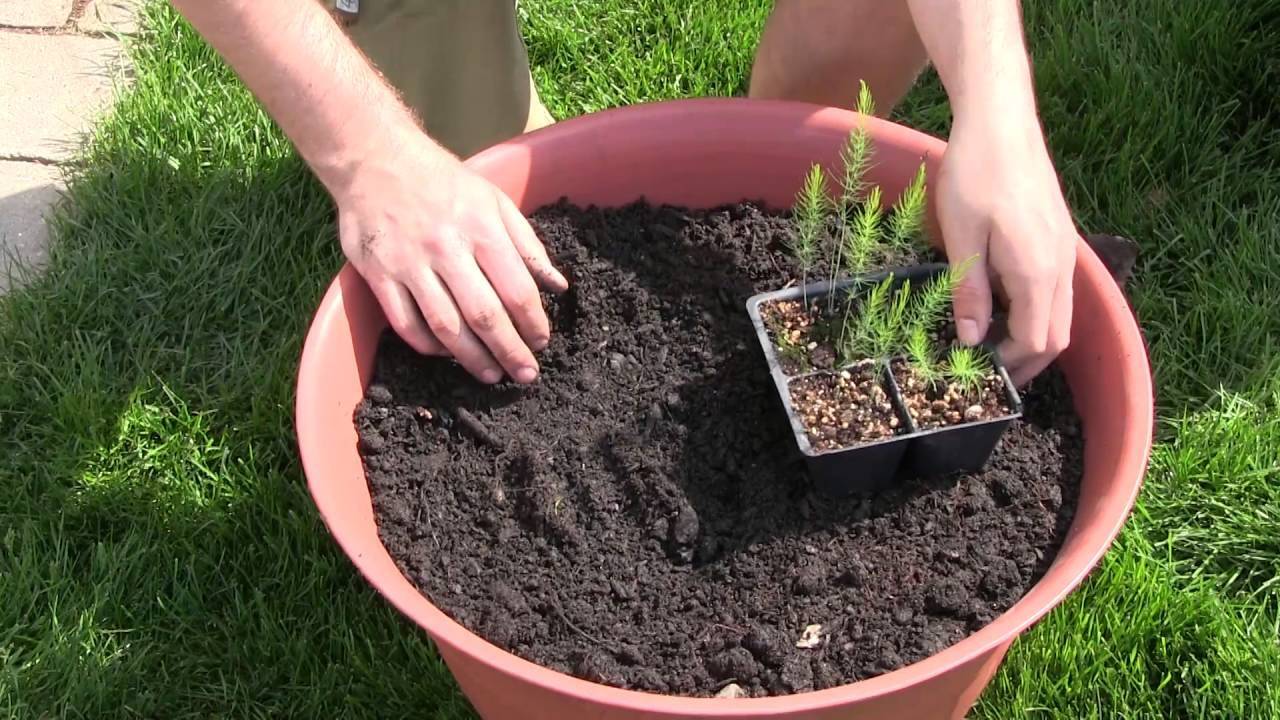
The key to successful container gardening is the container itself. When it comes to asparagus, bigger is better. It would help if you aimed for a container that’s at least 18 inches deep and 18 inches wide, with a similar height. This will provide enough space for the asparagus roots to spread and grow comfortably. You can opt for plastic, clay, or wooden containers, ensure they have adequate drainage holes to prevent waterlogging as asparagus roots don’t like wet feet!
3. Planting Your Asparagus
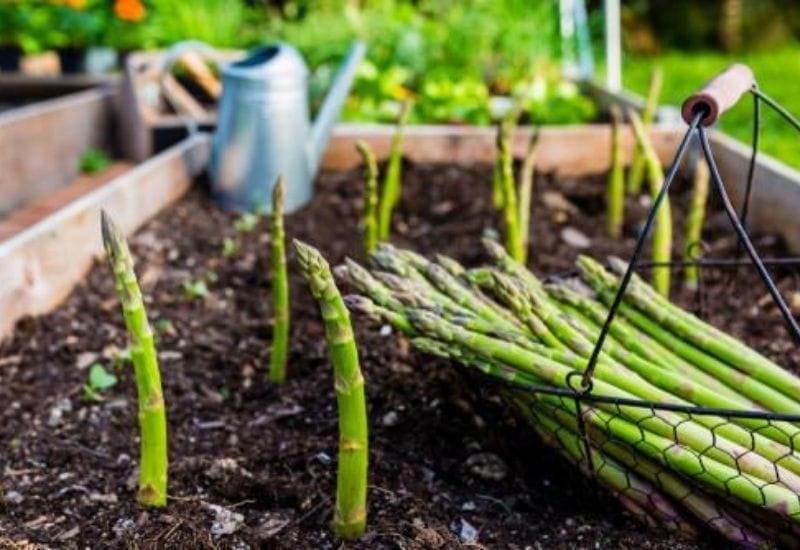
Now, it’s time to settle your asparagus to their new home. Fill your container with a high-quality potting mix that’s rich in organic matter and well-draining. Place the crowns in the soil, about 12 inches apart. Make sure the crown tops are about 2 inches below the soil surface. Asparagus crowns prefer to be snug in their containers, so there’s no need to go overboard with spacing. Plus, water the crowns thoroughly to help them settle in.
4. Caring For Your Asparagus
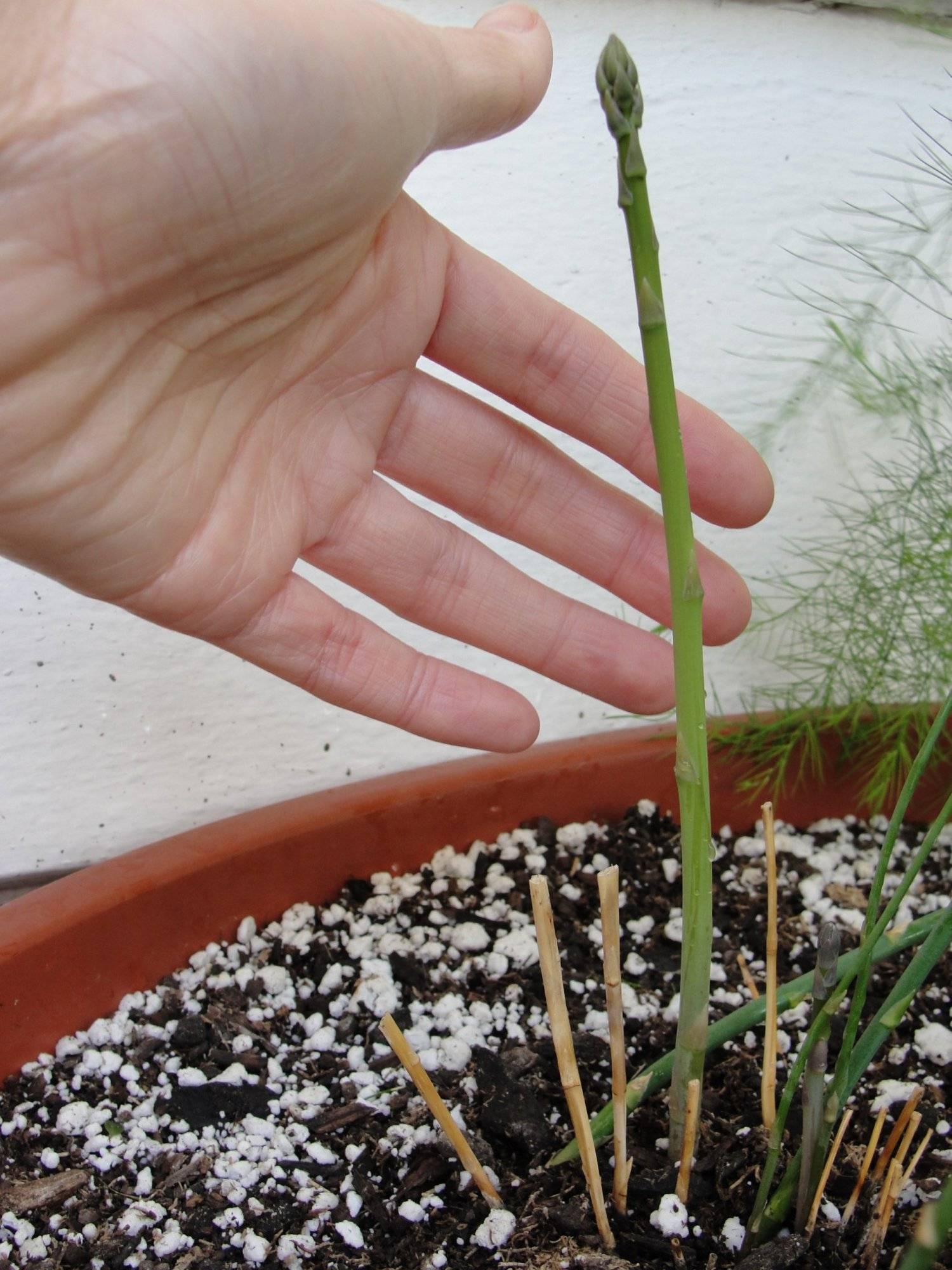
Asparagus loves the sun, so choose a sunny location for your containers, providing at least 6-8 hours of sunlight daily. If you’re short on sunny spots, consider rotating your containers throughout the day to ensure even exposure.
Asparagus doesn’t appreciate drying out or standing in water, so you should keep the soil consistently moist but not waterlogged. During its first 2 growing seasons, give it 1-2 inches of water per week. Mulching the soil can also help retain moisture.
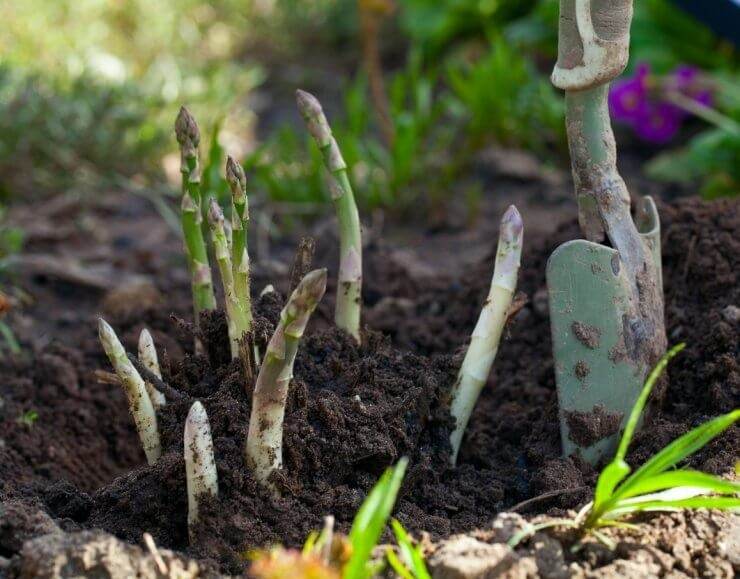
As asparagus is a hungry plant, it’s important to fertilize your containers with a balanced, slow-release fertilizer in early spring and mid-summer.
As your asparagus spears start to grow, you may need to thin them out. Allow some spears to mature into ferns while harvesting others. This helps the asparagus establish strong roots for future harvests.
5. Harvesting Asparagus

The moment you’ve been eagerly awaiting is the harvest. It’s best to resist the temptation to harvest spears during the first year to allow the plant to establish a robust root system. In the second year, you can start harvesting spears that are at least the thickness of your pinky finger. Use a knife or scissors to cut the spears just below the soil surface.
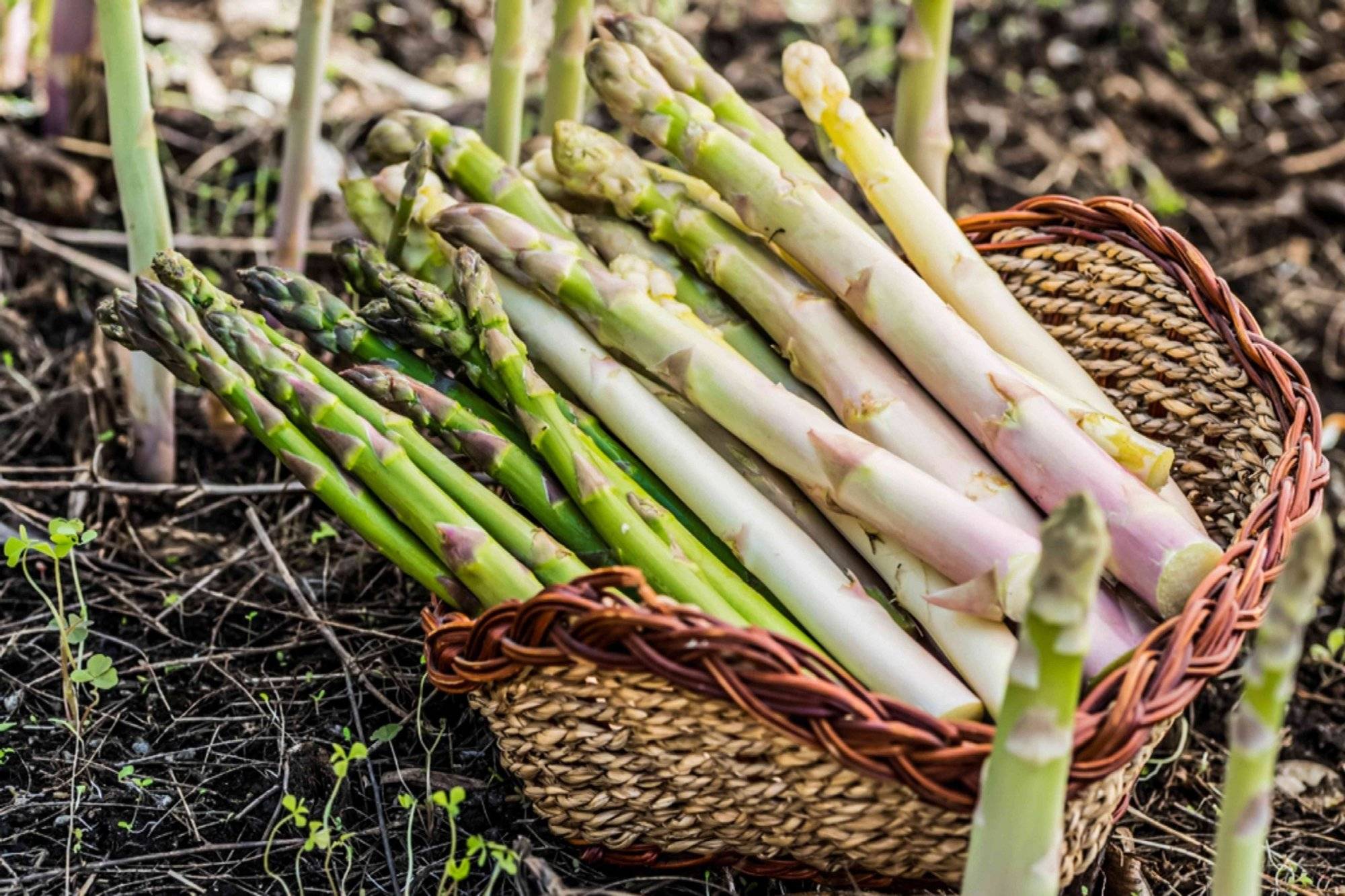
Once the harvest season is in full swing, you can enjoy fresh asparagus for several weeks. The more you harvest, the more the plant will produce. Just remember to stop harvesting when the spears become thin, about the diameter of a pencil, to allow the plant to rejuvenate.
With these steps, you’re well on your way to growing asparagus in containers. Whether you have a small balcony or a limited garden space, the joy of harvesting your own crisp, flavorful asparagus is within reach. So, grab your containers, your asparagus crowns, and let’s get growing!
